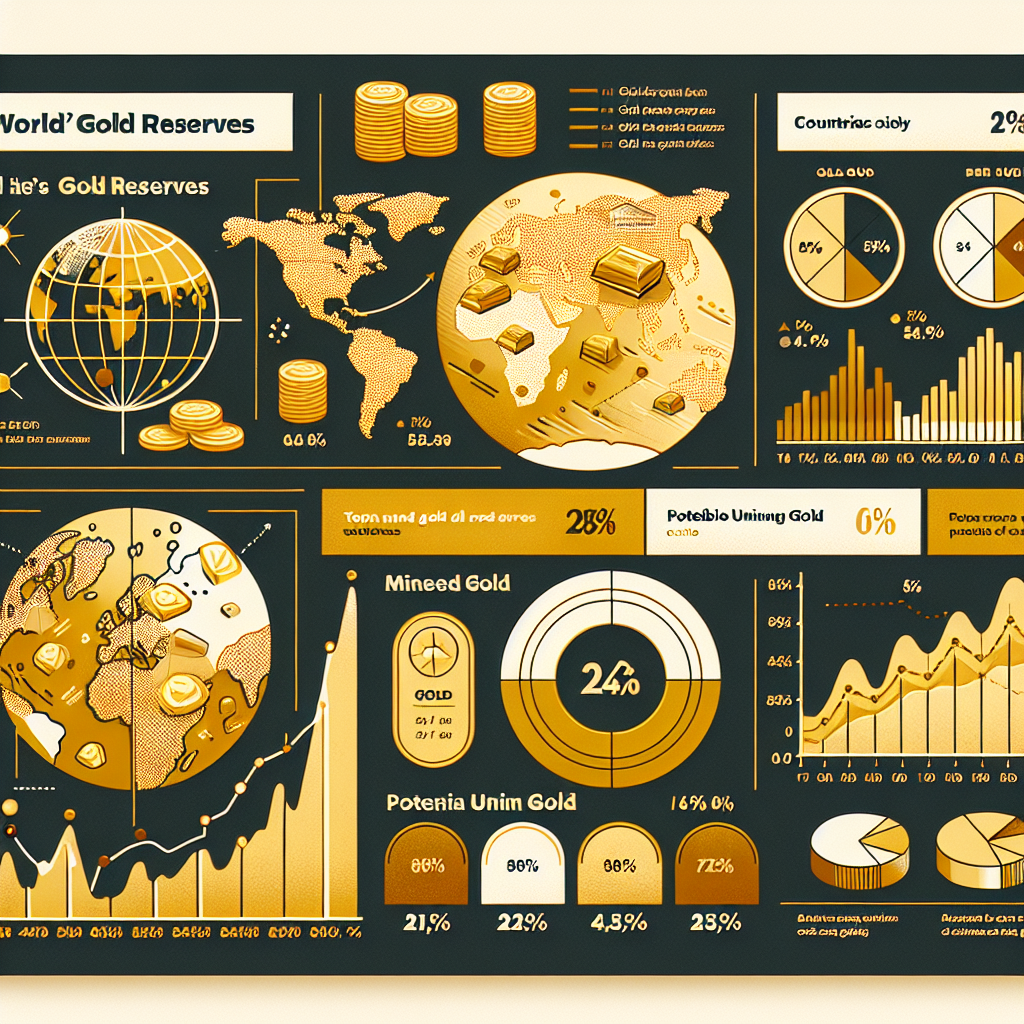With the continuous rise in gold prices, the public’s attention towards gold has been growing, leading many to wonder about the global gold reserves. How much gold has been mined, and how much is left?
According to a report by Live Science, the U.S. Geological Survey estimates that humanity has collected approximately 206,000 metric tons of gold from rocks and rivers throughout history, with the majority used for jewelry making. This estimate is significantly lower than that of the World Gold Council, which states that around 238,391 metric tons of gold have been mined globally so far, with 45% used for jewelry, 22% held in the form of bars and coins, and 17% stored in various central banks.
Although a considerable portion of economically feasible gold has been mined from the Earth’s crust, there are still reserves. The U.S. Geological Survey’s report indicates that approximately 70,550 metric tons of gold are still present in economically viable ore deposits globally. Currently, Russia, Australia, and South Africa are the countries with the largest undeveloped gold reserves.
Experts note the difference between reserves and resources. Reserves refer to the economically mineable portion within ore deposits, while resources involve deposits with less geological knowledge and insufficient mining confidence.
Citing data from the consultancy firm Metals Focus, the World Gold Council states that global gold reserves amount to 60,370 metric tons, while estimated gold resources reach about 145,626 metric tons.
Moreover, most of Earth’s gold is not concentrated or easily accessible. Research from the University of California, Berkeley reveals that tiny gold grains and nuggets scattered in the crust are not worth mining, particularly common in seawater and igneous rocks.
Data from The Royal Mint shows that the concentration of gold in the Earth’s crust is roughly 0.004 grams per metric ton, suggesting that all gold particles in the crust could weigh around 441 million metric tons.
While these gold reserves seem substantial, experts emphasize that they represent only a fraction of Earth’s actual gold content. Geologists explain that over 99% of the Earth’s gold reserves are located in the core, sufficient to cover the entire land surface with a half-meter thickness.
Research from Göttingen University indicates that vast amounts of gold stored in the core are leaking into the crust through the mantle. Monash University’s geologist and researcher, Chris Voisey, explains that during Earth’s formation, most mineable gold sank into the core due to its high density.
Approximately 99.5% of Earth’s mass formed in a molten state, allowing for the separation based on density, leading gold into the core. Only 0.5% of the Earth’s mass, from later bombardment events, contains gold found in rocks and concentrated into ore deposits.
Voisey mentions that this minority of gold remained in the Earth’s crust due to the solidified crust formed before their arrival, originating from the late heavy bombardment between 4.1 to 3.8 billion years ago.
In a scenario where so much gold is held in the core and the gold concentration in the crust varies greatly, Voisey expresses skepticism regarding researchers’ ability to accurately measure all the gold on Earth. Determining the quantity of undiscovered gold remains “impossible.”

